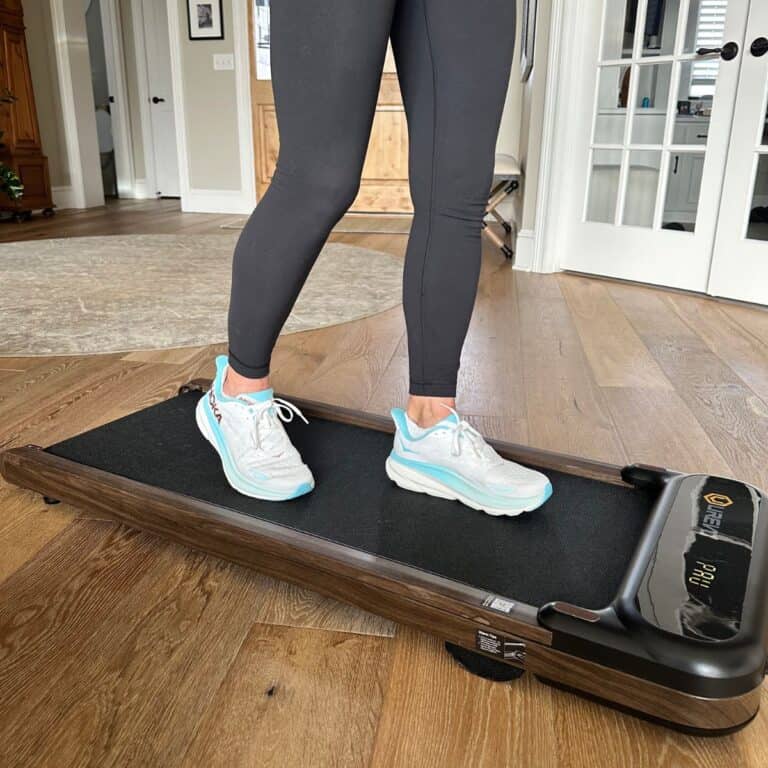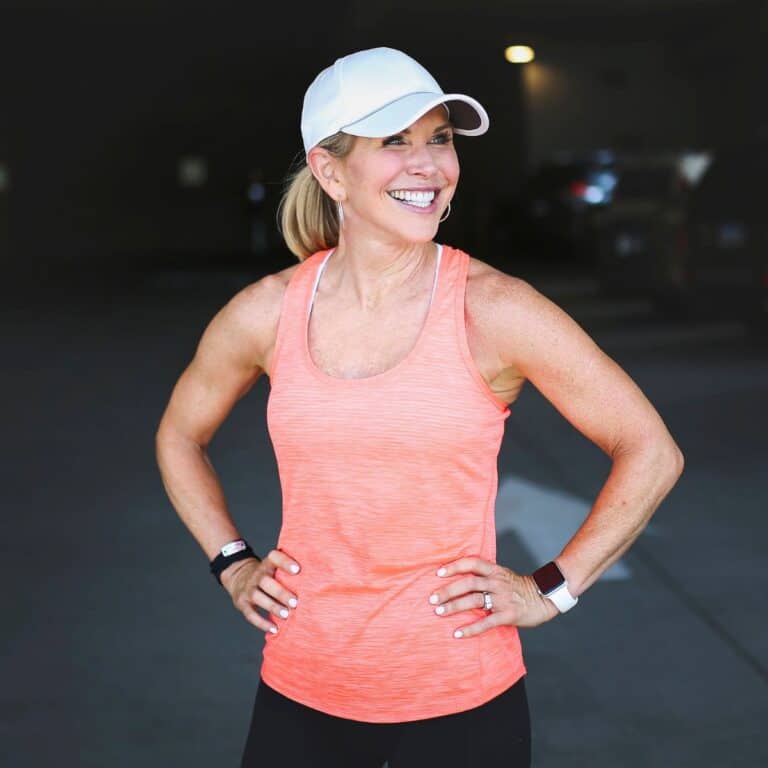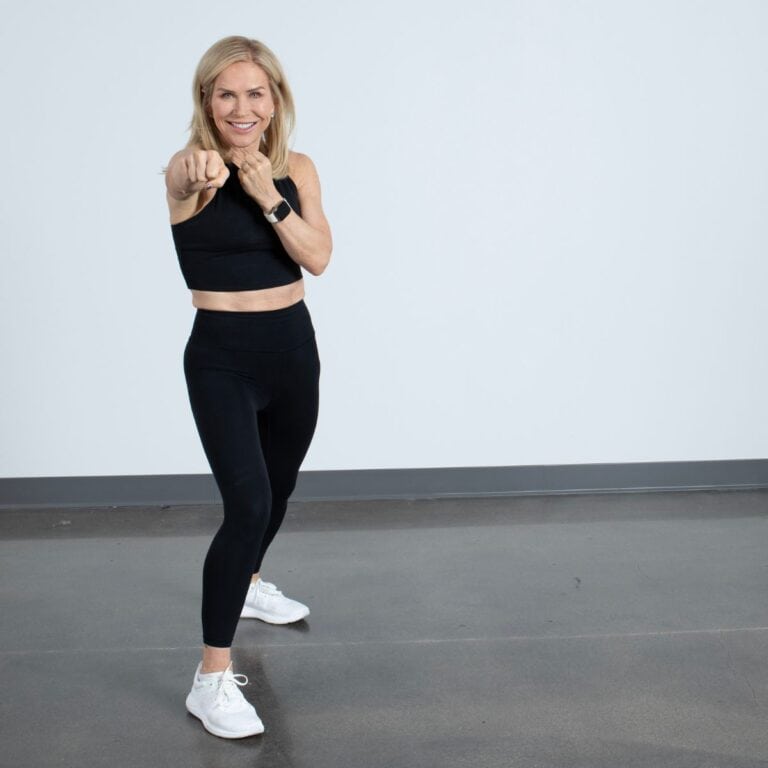If you are over 50, it’s time to understand what these two words mean and how to incorporate them into your life. You’ve probably heard the terms flexibility and mobility thrown around in fitness conversations, often used interchangeably.
But here’s the deal: while they’re closely related, they’re not the same thing—and understanding the difference is key to getting the most out of your workouts as you age.
As a fitness trainer, there are a lot of things I do differently at 59 vs. 39. I’ve gotten smarter as I age and every fitness class I teach I incorporate these two things.
Let’s break down what sets mobility and flexibility apart, why you need both, and how to fit them into your fitness routine for a body that moves better, feels better, and stays injury-free.
Get the Latests Posts to Your Inbox
Join over 100,000 followers who are inspired to make healthier lifestyle choices as they age!
Mobility vs. Flexibility: What’s the Difference?
Think of mobility and flexibility as partners in crime—each essential for helping you move freely and avoid injury, but each playing a distinct role.
Flexibility: The Length of Your Muscles
Flexibility is all about how far your muscles can stretch. Imagine trying to touch your toes—if your hamstrings are tight, you’ll feel it! That tightness means limited flexibility.
The best way to improve flexibility? Slow, static stretches—like holding a deep forward fold or pigeon pose—ideally for 30-60 seconds. And timing is key: save these longer holds for after your workout or when your muscles are nice and warm.
Mobility: The Freedom of Your Joints
Mobility, on the other hand, is about how well your joints move through their full range of motion. Tight hips making it hard to sink into a squat? That’s a mobility issue—and it’s more than just your muscles; it’s your joints, ligaments, and connective tissue working together (or not!).
The secret to improving mobility is dynamic movement—think hip circles, arm swings, and walking lunges. And unlike flexibility, mobility work belongs before your workout to prime your body for action.
Why Both Matter for Your Workout Results
Here’s why you should care about both mobility and flexibility:
Fewer Injuries: Tight hamstrings? That’s a pulled muscle waiting to happen. Poor hip mobility? You’ll struggle with squats and lunges, which means less strength and fewer calories burned. Check out the 7 ways I prevent joint pain during exercise in my 50’s.
Better Performance: Good mobility means you can hit deeper squats and longer lunges, building more muscle and strength.
Less Post-Workout Soreness: Flexibility helps your muscles recover faster and feel looser after a tough session.
The Right Moves at the Right Time: When to Focus on Mobility vs. Flexibility
Before Your Workout: Focus on mobility. Get your body moving with dynamic stretches that activate your muscles and lubricate your joints.
After Your Workout: Shift to flexibility. Your muscles are warm and ready to stretch, making it the perfect time for deep holds that improve your range of motion.
Mobility Exercises To Do Before Your Workout
Get your body ready to move with these dynamic, joint-opening exercises! Mobility work is essential to activate your muscles, increase your range of motion, and prevent injury. Let’s get moving!
Arm Circles: Warm Up Your Shoulders
Your shoulders are powerhouses—but also prone to injury since they’re full of soft tissue. Arm circles are a simple, effective way to get blood flowing and prep for moves like push-ups or chaturangas.
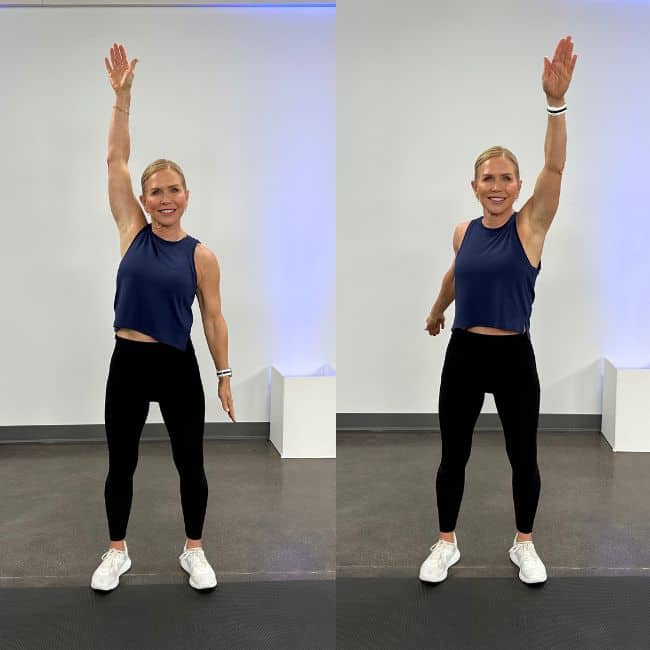
How to: Stand tall and extend your arms straight out to the sides. Start with small forward circles, gradually making them bigger. Complete 12-15 reps, then switch directions and repeat in reverse.
Hip Circles: Loosen Tight Hips
Tight hips are the enemy of squats, lunges, and runs—so let’s get those ball-and-socket joints moving!
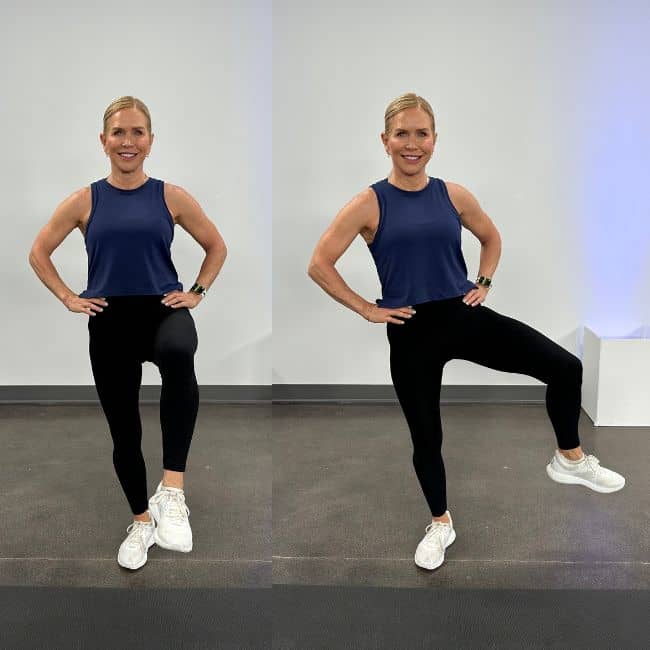
How to: Stand with feet hip-width apart and engage your core. Lift your right knee and draw a large circle out, down, and around. Alternate legs for 6-8 reps per side. Then, switch directions and repeat.
Inch Worms: Full-Body Wake-Up Call
Inch worms are a must-do for mobility! This dynamic stretch hits your spine, hamstrings, hip flexors, and chest all at once.

How to: Start standing tall. Slowly fold forward, reaching your hands toward the floor. Walk your hands forward to a high plank, then lower your hips briefly to stretch your spine. Walk hands back to your feet and roll up slowly. Repeat 5-8 times.
Seated Spinal Twist: Improve Mobility & Relieve Tension
The seated spinal twist is a gentle yet effective stretch that enhances spinal mobility, improves posture, and relieves tension in the back and shoulders. This exercise is great for increasing flexibility and can be done anywhere, making it perfect for all fitness levels.
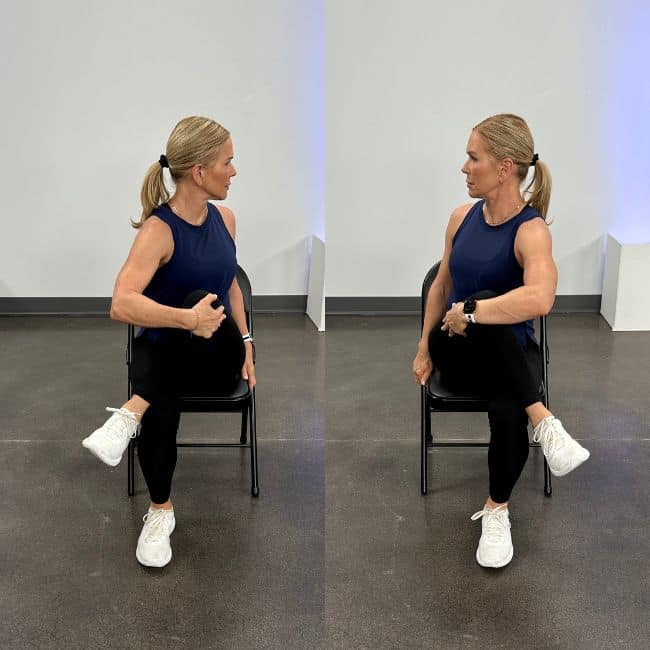
How to: Sit with your legs extended, then bend your right knee and place your foot outside your left thigh. Place your right hand behind you for support and bring your left elbow to the outside of your right knee. Inhale to lengthen your spine, then exhale as you twist to the right, looking over your shoulder. Hold for 20–30 seconds, then return to center and switch sides.
Butt Kickers: Fire Up Your Quads
Get your heart pumping and quads ready for action with this quick, cardio-focused mobility move.

How to: Stand tall with feet hip-width apart. Lean slightly forward and start jogging in place, kicking your heels up toward your glutes. Pump your arms for extra intensity. Continue for 20-30 seconds.
Knee Lifts: Hamstring and Glute Activator
Knee lifts are a simple way to activate your posterior chain while increasing your heart rate.

How to: Reach your arms overhead. As you lift your right knee toward your chest, pull your arms down to meet it. Alternate knees with a quick, marching motion for 20-30 seconds.
Once you’ve cycled through this routine, you’ll feel primed and ready for your workout! Your joints are open, your muscles are warm, and your body is ready to move efficiently and powerfully.
Flexibility Stretches To Do After Your Workout
Now that you’re warm and worked, it’s time to stretch it all out! These slow, deep stretches are the perfect cooldown, helping your muscles recover and improving your overall range of motion.
Standing Side Bends: Stretch Your Side Body
This simple stretch releases tension along your spine, lats, and hips—perfect for realigning your posture after a tough session.

How to: Stand tall with feet hip-width apart. Reach both arms overhead, then slide your right arm down your side as your left arm reaches up and over. Keep your body facing forward—no twisting! Switch sides. Hold each side for 30 seconds.
Forward Fold: Hamstring Hero
Forward fold is a classic for a reason! It lengthens your spine and stretches those hard-working hamstrings.

How to: Stand tall, inhale as you reach your arms overhead, and exhale as you fold forward. Keep a slight bend in your knees if needed. Rest your hands on the floor, a block, or a bench. Hold for 30 seconds, breathing deeply.
Downward Dog: Total Back-Body Stretch
A yoga favorite—and for good reason! Downward dog stretches your back, calves, hamstrings, and even your ankles.

How to: From a forward fold, step back into a high plank. Lift your hips high and push your chest back toward your thighs. Press your heels toward the floor (they don’t have to touch!) and draw your shoulders away from your ears. Hold for 30 seconds.
Crescent Lunge: Open Up Your Hip Flexors
This one’s a must if you’ve been squatting, running, or cycling! Crescent lunge opens tight hip flexors and stretches your torso.

How to: From downward dog, step your right foot forward between your hands. Drop your left knee to the floor and reach your arms overhead. Gently press your hips forward while lifting your chest. Hold for 30 seconds, then switch sides.
Pigeon Pose: Hip Release Hero
Nothing melts hip tension like pigeon pose! It’s especially great after running or strength training.

How to: From downward dog, bring your right knee forward and place it behind your right wrist. Extend your left leg straight back. Let your upper body fold over your right leg, keeping your hips square. Breathe deeply for 30 seconds, then switch sides.
Reverse Tabletop: Chest Opener
End your stretch session with this heart-opening pose to combat desk hunch and keep your shoulders happy.

How to: Sit with knees bent, feet flat, and hands planted behind you (fingers pointing toward your feet). Press into your palms and lift your hips, creating a “tabletop” shape with your body. Keep your chest open and gaze up. Hold for 30 seconds.
The Bottom Line: Mobility + Flexibility = Better Workouts and Fewer Injuries
Remember: Mobility before you move, flexibility when you finish! By adding these exercises to your routine, you’ll keep your body strong, limber, and ready for whatever workout you tackle next.
Trust me—you’ll feel the difference!
